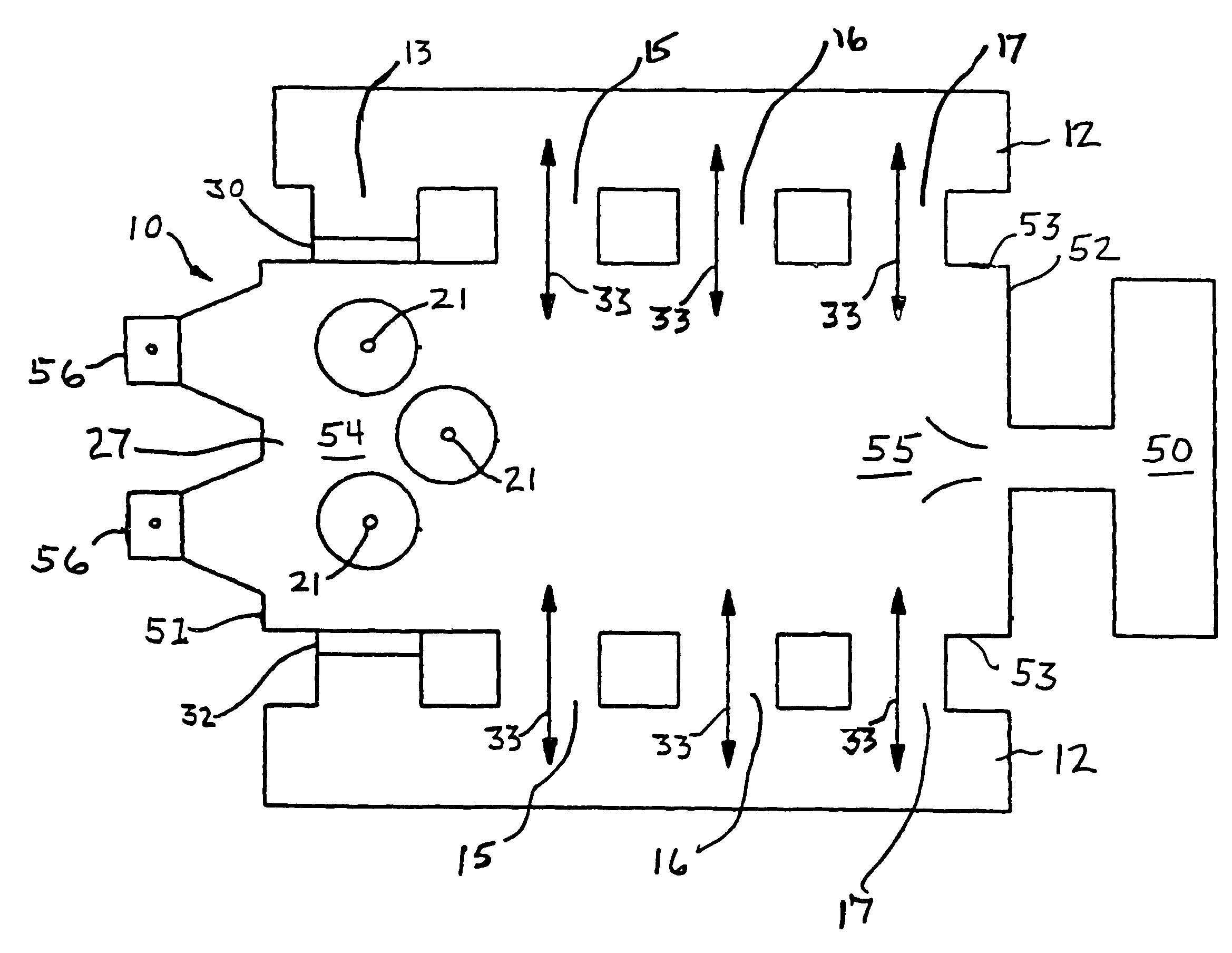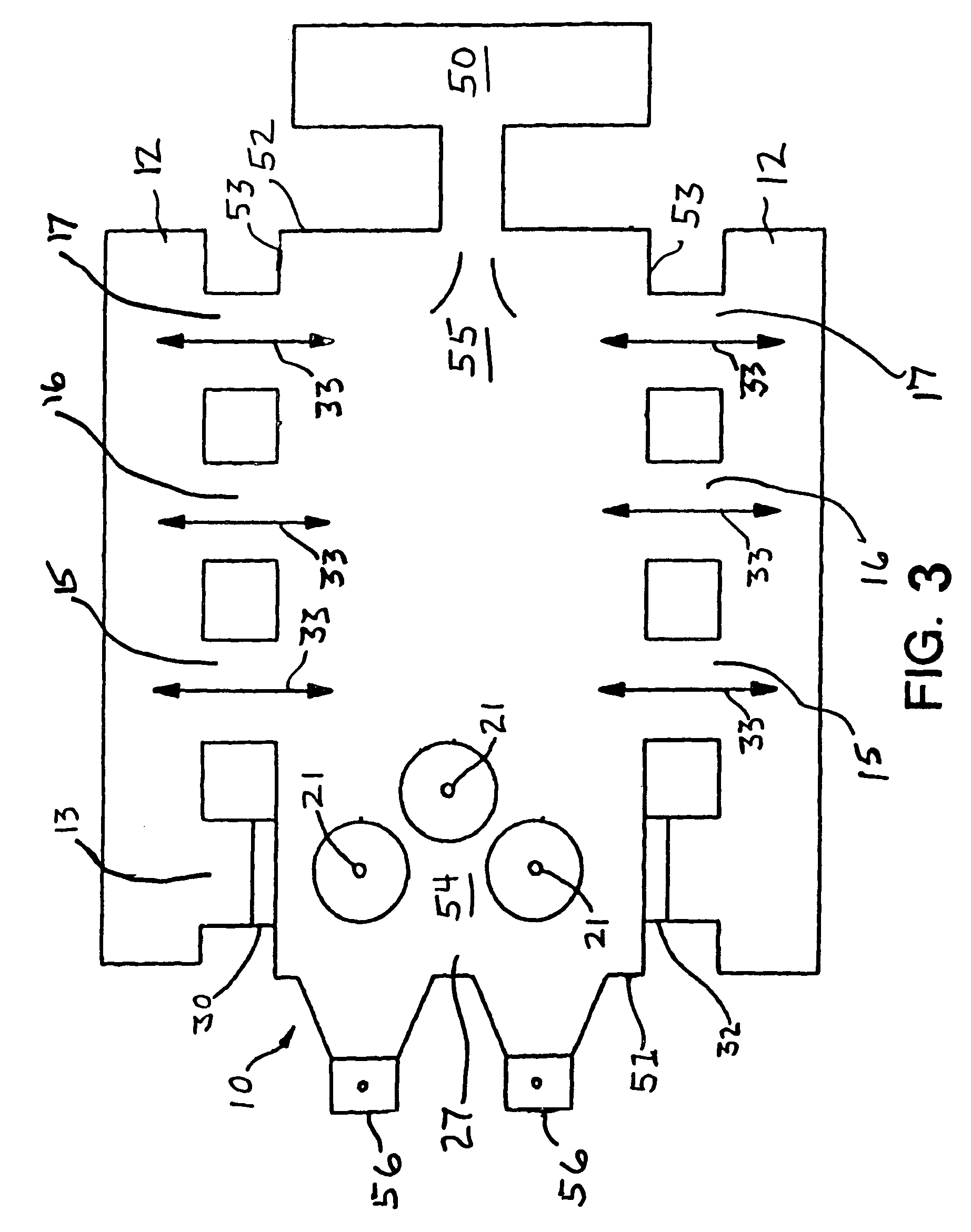Gas injection for glass melting furnace to reduce refractory degradation
a glass melting furnace and refractory technology, applied in the direction of combustion types, lighting and heating apparatus, combustion using lump and pulverulent fuel, etc., can solve the problems of reducing the structural integrity of the furnace, compromising the furnace crown structure, eroding, etc., and achieves the effect of reducing alkali vapor corrosion
- Summary
- Abstract
- Description
- Claims
- Application Information
AI Technical Summary
Benefits of technology
Problems solved by technology
Method used
Image
Examples
example 1
Retrofit with Roof Mounted Oxy-Fuel Burners
[0052]One demonstration of this invention was the oxygen boosting, 100% oxygen conversion, re-conversion to oxygen boost and finally conventional air fuel firing of an existing hot three-port cross-fired regenerative furnace. The furnace was initially firing all air fuel. Port One firing was replaced with at least one roof mounted oxygen fuel burner. The furnace fired conventionally air fuel regenerative on the remaining two ports. In the second phase, Port Two firing was then replaced with at least one roof mounted oxy-fuel burner and the furnace fired conventionally air fuel regenerative on the third port. In the third phase, Port Three firing was replaced with energy in the already installed roof-mounted oxy-fuel burners. The furnace capacity was increased from 55 to 85 tons per day with reduced energy input from 23.5 mm BTU / hr to 18 mm BTU / hr. The furnace was re-converted to air fuel firing in incremental stages. This example demonstrat...
example 2
Burner and Burner Block with Integral Oxygen Staging
[0053]An oxy-fuel burner provided with integral staging of oxygen, by means of the burner configuration or the burner in combination with the burner block, has been shown to provide increased heat transfer and reduced NOx. According to the present invention, at least one of this type of integrally staged burner is provided in the roof of a glass melting furnace. The burner is ideally positioned over the raw batch materials and is preferably angled such that the angle alpha (∝ being the angle of the axis of the burner in the direction of firing to the horizontal plane of the furnace or melt) equals about 91° to about 135° in the direction of the glass flow in the furnace.
example 3
A Burner and Burner Block with External Oxygen Staging
[0054]It has been shown that a burner with burner block mounted in the roof of a glass melting furnace with 2–8 oxygen injectors external to the burner and block can produce higher heat transfer than a non-staged burner. The burner is preferably angled from about 91° to about 135° relative to the surface of the glass and in the direction of the glass flow in the furnace. According to this example, 0% to about 90% of the stoichiometric combustion oxygen is injected through the primary oxygen burner, and the remaining 100% to about 10% secondary combustion oxygen is injected through the oxygen injectors, which are angled from about 0° to about 90° relative to the surface of the glass. As it can be appreciated by one skilled in the art, the number, angle and amount of staging ports is designed specifically for each furnace, in order to delay the combustion of the fuel until it impinges on or near the surface of the raw glass batch m...
PUM
| Property | Measurement | Unit |
|---|---|---|
| Flow rate | aaaaa | aaaaa |
Abstract
Description
Claims
Application Information
 Login to View More
Login to View More - R&D
- Intellectual Property
- Life Sciences
- Materials
- Tech Scout
- Unparalleled Data Quality
- Higher Quality Content
- 60% Fewer Hallucinations
Browse by: Latest US Patents, China's latest patents, Technical Efficacy Thesaurus, Application Domain, Technology Topic, Popular Technical Reports.
© 2025 PatSnap. All rights reserved.Legal|Privacy policy|Modern Slavery Act Transparency Statement|Sitemap|About US| Contact US: help@patsnap.com



